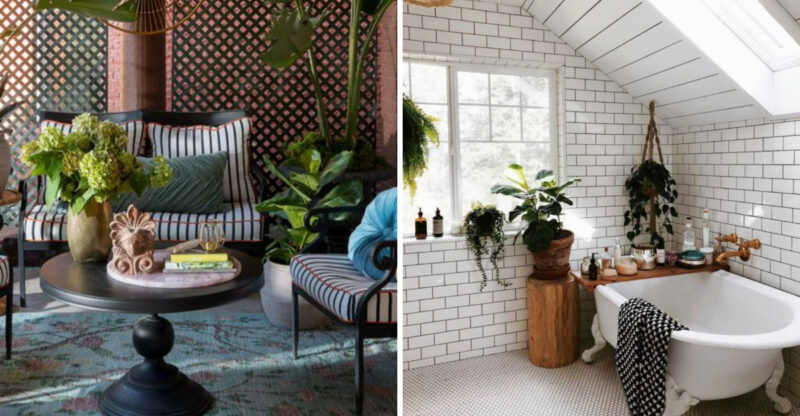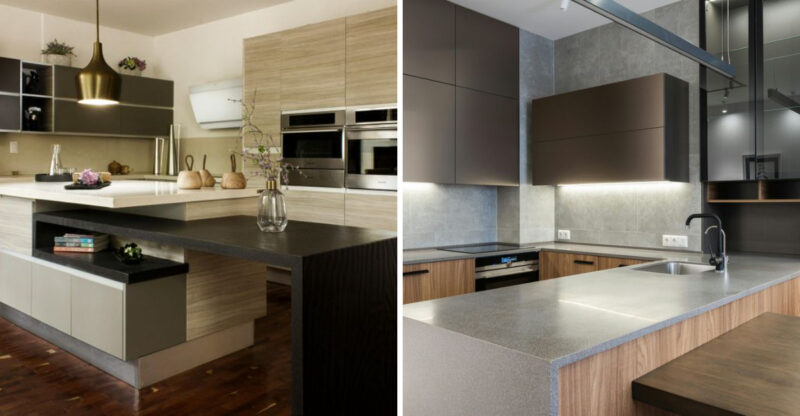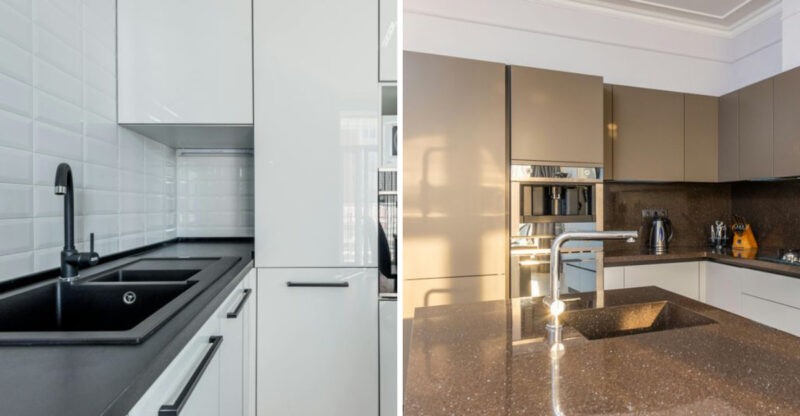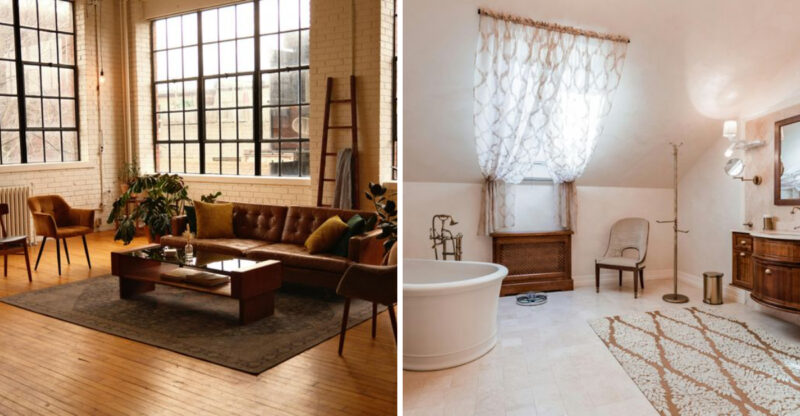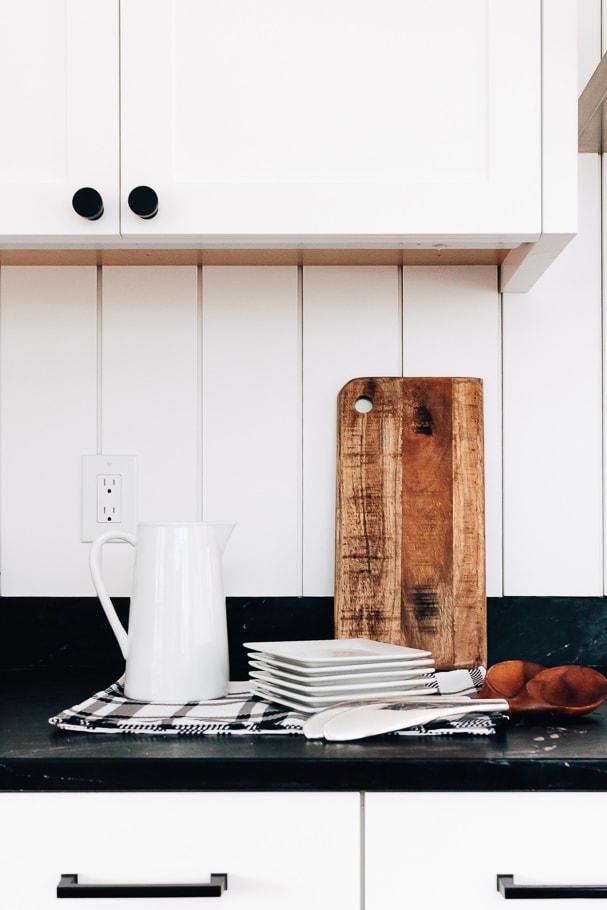Nevada Market Watch: 11 Homes Losing Value By End Of 2025 (And 5 That Are Gaining Steam)
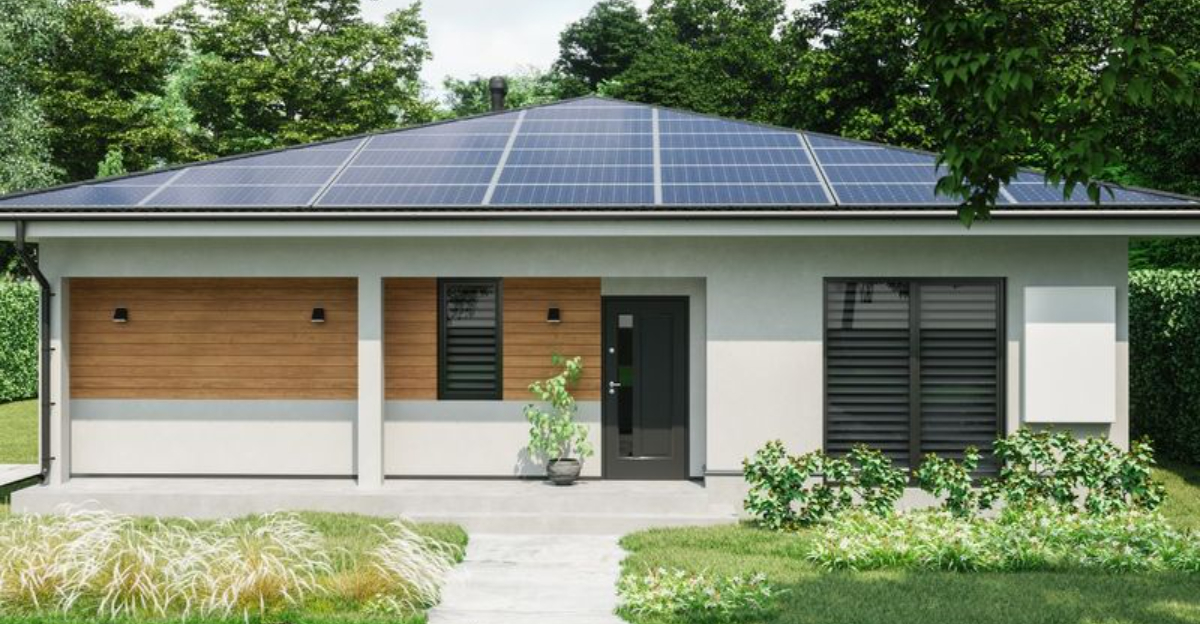
The Nevada housing market is shifting dramatically as we look toward 2025. Some property types that once commanded premium prices are now facing declining values, while others are experiencing unexpected growth.
These changes reflect evolving buyer preferences, economic factors, and lifestyle shifts happening across the Silver State.
Let’s explore which Nevada homes are losing their shine and which ones are becoming hot commodities.
1. Gated Golf Community Homes
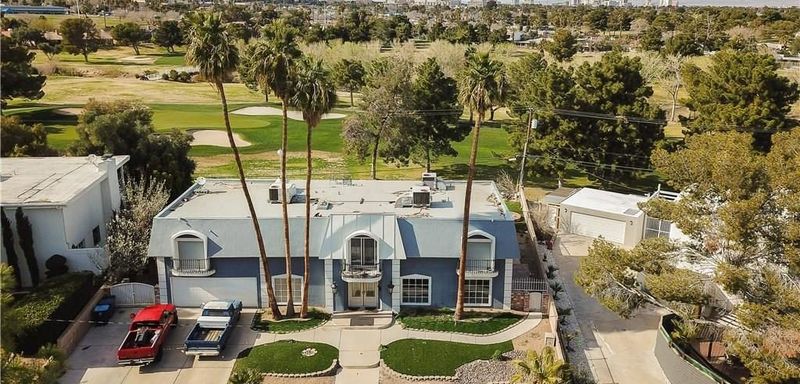
Golf community homes that once symbolized luxury living are losing their appeal fast. Young homebuyers simply don’t golf as much as previous generations, making these properties less desirable despite their manicured landscapes.
Water concerns also plague these communities, with rising costs to maintain those lush fairways in Nevada’s desert climate. Many buyers now view the HOA fees and membership requirements as financial burdens rather than perks.
Retirees who traditionally purchased these homes are downsizing or choosing communities with different amenities focused on overall wellness rather than just golf. Expect values to drop 15-20% by 2025 as demand continues to wane.
2. Desert Mega Mansions
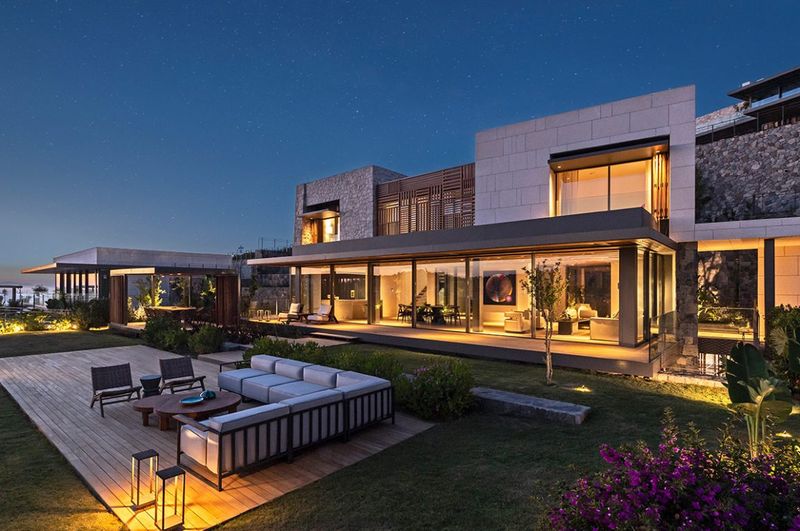
Those sprawling desert estates with 8+ bedrooms and excessive square footage are rapidly losing their luster. Energy costs to cool these massive structures during Nevada’s brutal summers have skyrocketed, making ownership increasingly expensive.
Maintenance requirements present another headache – from managing acres of landscaping to maintaining multiple pools and water features in the desert. Today’s luxury buyers prefer smarter, more efficient homes rather than sheer size.
Remote work trends have also decreased the need for entertaining space and formal areas that these mansions typically offer. Market analysts predict these properties could lose up to 25% of their value by 2025 as fewer buyers want the financial and environmental responsibility they represent.
3. Waterfront Vacation Rentals
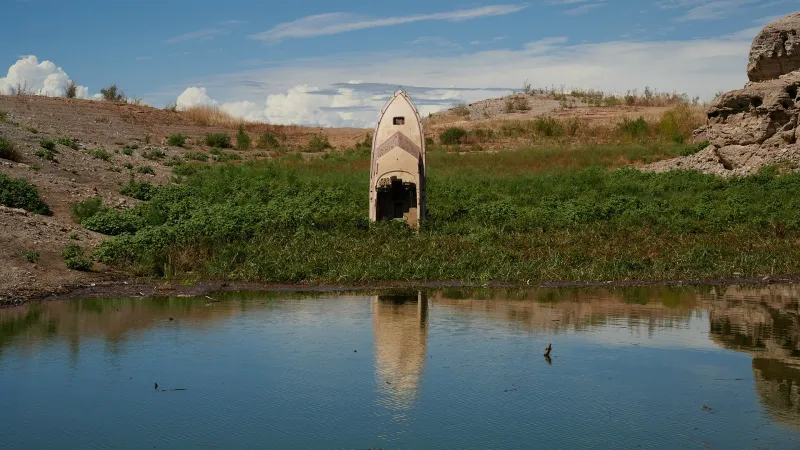
Lake Mead’s dramatic water level decline has left many once-premium waterfront properties literally high and dry. Properties that used to boast lake access now sit hundreds of feet from receding shorelines, dramatically reducing their appeal and functionality.
Stricter short-term rental regulations across Nevada communities have further complicated ownership, with some areas banning vacation rentals altogether. Climate concerns continue affecting these investments, with unpredictable water conditions making long-term ownership risky.
Insurance costs have also exploded for these properties due to increased flooding and environmental risks. By 2025, some waterfront vacation rentals could see values drop 30% or more as these challenges intensify and buyer interest wanes.
4. Large Suburban Houses
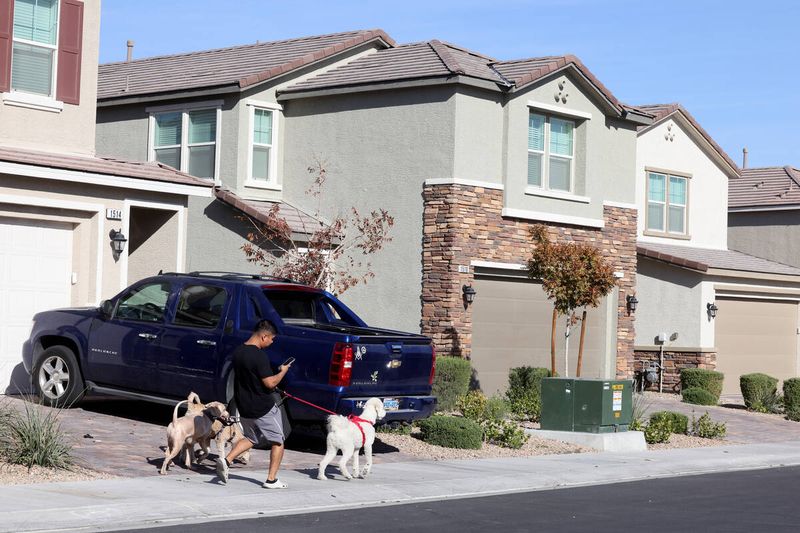
McMansions in Nevada’s suburban sprawl are falling from favor as family sizes shrink and priorities shift. These cookie-cutter 4,000+ square foot homes built during the early 2000s boom now face declining buyer interest and aging infrastructure issues.
Higher interest rates have particularly hurt these properties, as their price points require larger mortgages that fewer buyers can afford. Energy inefficiency presents another drawback – these homes typically have poor insulation and outdated systems that drive up utility costs in Nevada’s extreme climate.
Long commutes from these distant suburbs have become less appealing as gas prices rise and work-from-home options make location flexibility more important. Expect values to drop 10-15% by 2025 as demand shifts toward more practical housing options.
5. High-Rise Urban Condos
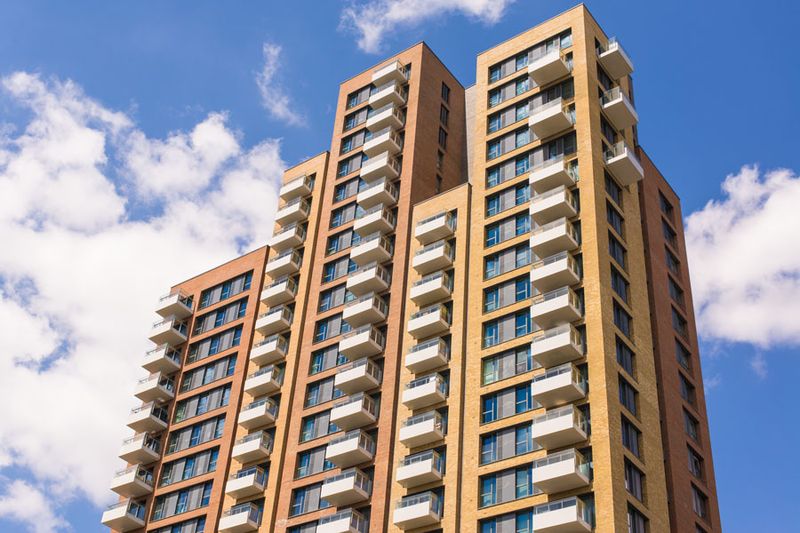
Downtown high-rise condos in Las Vegas and Reno are experiencing surprising value drops as urban living preferences change. Post-pandemic shifts have reduced demand for these properties as buyers seek more personal space and private outdoor areas.
Rising HOA fees present a serious concern, with many buildings facing deferred maintenance issues requiring special assessments. Security problems and quality-of-life issues in some urban centers have further dampened enthusiasm for vertical living.
Oversupply remains a persistent challenge, with several new developments coming online just as demand began cooling. Real estate experts predict these units could lose 15-20% of their value by 2025, with older buildings facing even steeper declines unless significant renovations address changing buyer expectations.
6. Timeshare Properties
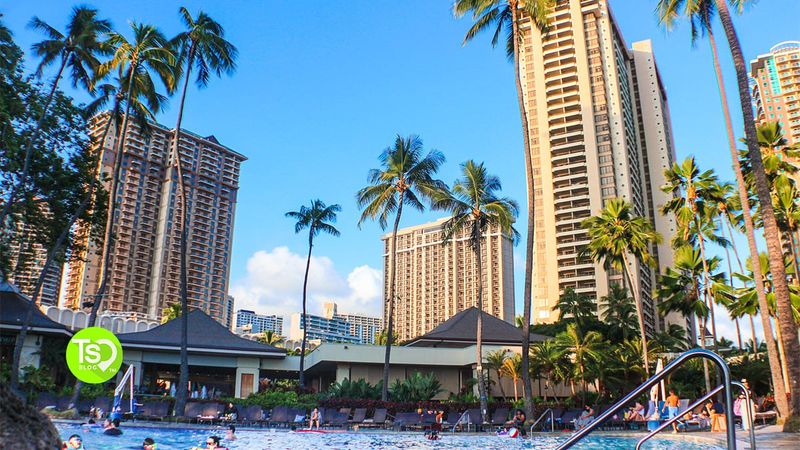
Nevada timeshares are experiencing a particularly steep decline as younger generations reject this outdated ownership model. Inflexible usage rules and the inability to easily resell make these properties increasingly unattractive compared to modern vacation alternatives.
Maintenance fees continue rising while resale values plummet, creating a financial trap for many owners. The secondary market is flooded with desperate sellers willing to accept pennies on the dollar just to escape ongoing obligations.
Hotel-branded vacation clubs and home-sharing platforms offer more flexible, commitment-free options that better match today’s travel preferences. By 2025, most Nevada timeshares could lose 40-50% of their already diminished value, with some becoming virtually impossible to sell at any price.
7. Aging Senior-Living Homes
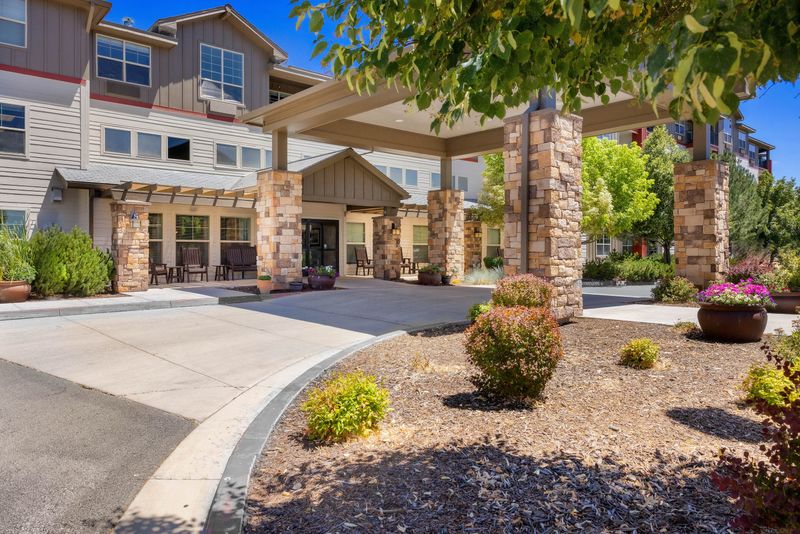
Older senior communities built in the 1980s-90s are rapidly losing value as they fail to meet modern expectations for active adult living. These dated properties often lack the wellness amenities, technology integration, and social spaces that today’s seniors demand.
Healthcare considerations further complicate matters many older communities weren’t designed for aging-in-place with accessible features and proximity to medical facilities. Maintenance issues compound the problem, with aging infrastructure requiring costly updates that many associations struggle to fund.
Demographic shifts also play a role, as many Baby Boomers prefer age-diverse neighborhoods rather than traditional retirement communities. Property values in these aging developments could drop 20-25% by 2025 as newer, more appealing senior living options continue entering the Nevada market.
8. Remote Desert Cabins
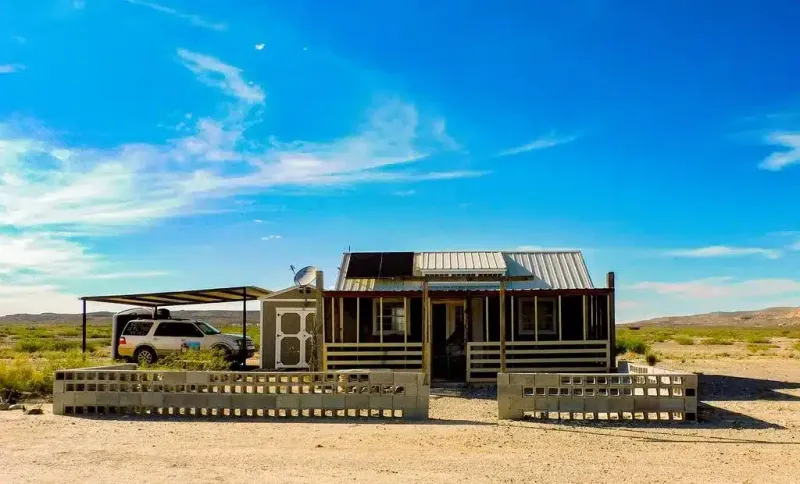
If you’re holding a remote desert cabin as an investment, prepare for disappointing returns. Rising temperatures are making these properties increasingly uncomfortable during Nevada’s extended summer months, with many lacking adequate cooling or insulation.
Water access presents a growing challenge as wells run dry and delivery costs increase. Insurance has become another headache – many companies now refuse coverage in remote areas due to wildfire risks and emergency service limitations.
Cell service and internet connectivity expectations have changed dramatically, leaving these off-grid properties less appealing to buyers who want to stay connected. Market analysts predict these remote cabins could lose 15-30% of their value by 2025, with properties furthest from amenities and services experiencing the steepest declines.
9. Old Spanish-Style Villas
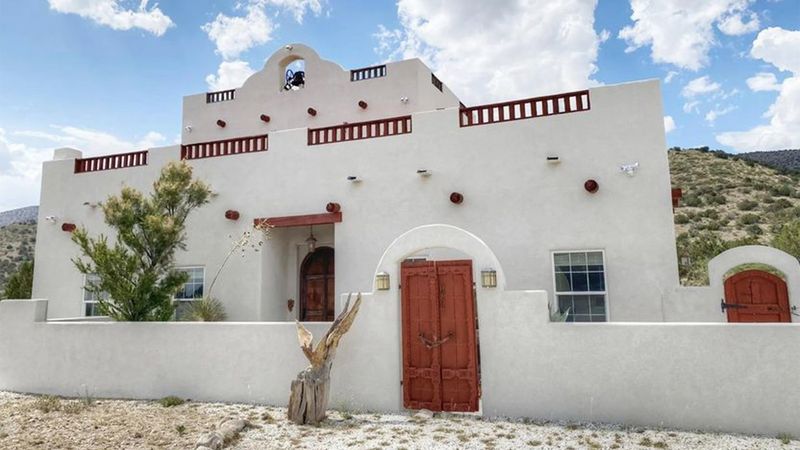
Those terracotta-roofed Spanish revival homes that once dominated upscale Nevada neighborhoods are falling out of fashion. Their dark interiors, small windows, and compartmentalized floor plans conflict with today’s preference for bright, open living spaces.
Energy efficiency poses a significant problem – these homes typically have poor insulation and outdated systems that create comfort issues and high utility bills. Maintenance costs add further strain, with specialized materials and craftsmanship required to preserve authentic details.
Formal dining rooms and living areas that define these homes don’t align with casual modern lifestyles. Values for unrenovated Spanish-style villas could drop 15-20% by 2025, though thoughtfully updated properties that preserve character while adding modern functionality may fare better.
10. Coastal Stucco Dwellings
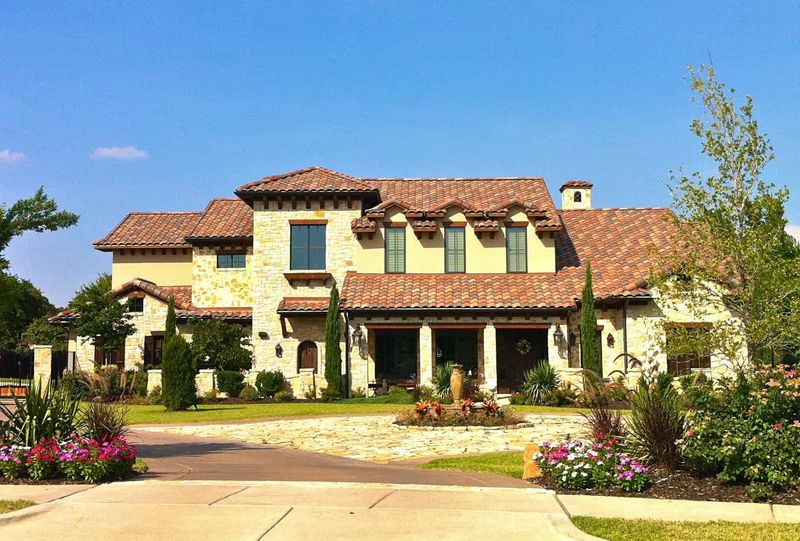
Nevada’s “coastal-inspired” stucco homes – those beige, Mediterranean-influenced designs popular in the early 2000s – are rapidly losing market appeal. These properties often feature dated design elements like arched doorways, faux Tuscan finishes, and ornate details that today’s buyers find excessive.
Dark wood cabinets, brown granite countertops, and travertine tiles that characterize these homes feel increasingly outdated compared to contemporary preferences. Their typically inefficient layouts waste space on formal areas while lacking the functional storage and multi-purpose rooms modern families want.
Renovation costs present another challenge, as these homes often require extensive updates to meet current tastes. Expect values to decline 10-15% by 2025 unless significant modernization addresses their stylistic and functional limitations.
11. Overbuilt Custom Homes
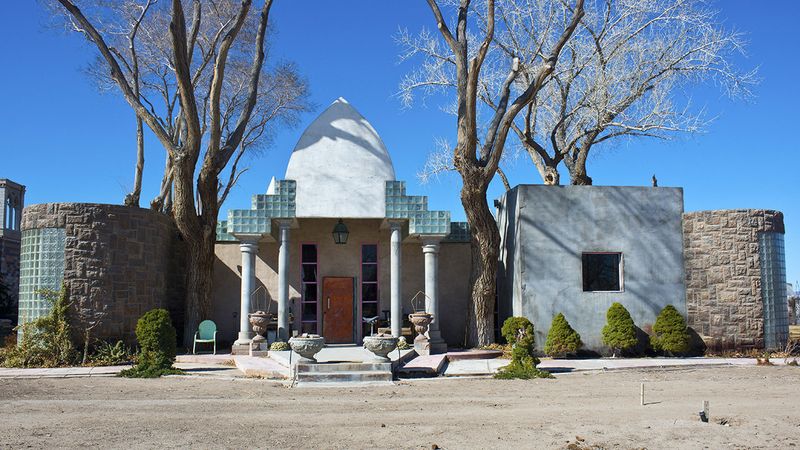
Ultra-personalized custom homes with highly specific features are becoming increasingly difficult to sell in Nevada’s changing market. Properties with unusual layouts, excessive customization, or quirky design choices limit their appeal to the small pool of buyers who share the original owner’s tastes.
Special purpose rooms present particular challenges home theaters, indoor basketball courts, or elaborate wine cellars often don’t justify their space or maintenance costs for typical buyers. Over-improvement for the neighborhood creates another issue, as these properties frequently can’t recoup their construction costs when surrounded by more modest homes.
Maintenance complexity further dampens appeal, with custom systems and materials often requiring specialized care. These overbuilt properties could see values drop 20-30% by 2025 as buyers increasingly favor practical, flexible spaces over extreme personalization.
12. Large Vacation Rentals
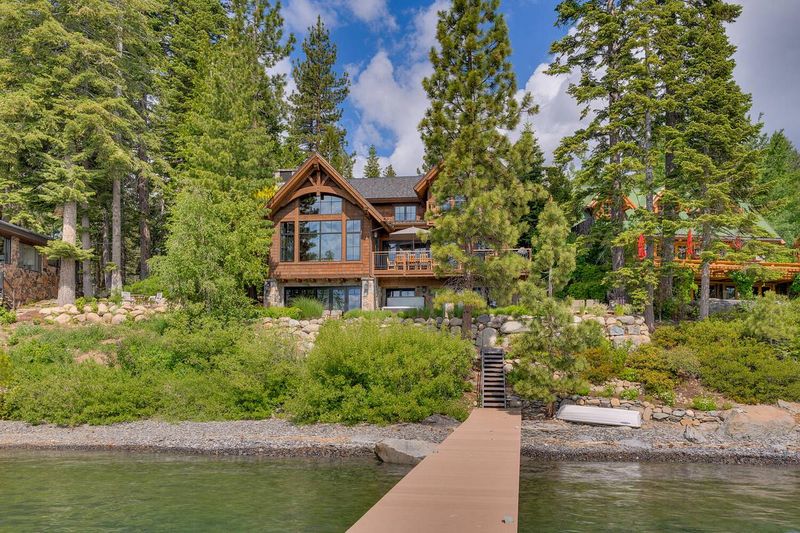
Multi-family vacation properties designed for group getaways are experiencing surprising growth in Nevada’s tourist-friendly regions. These spacious rentals with 6+ bedrooms cater perfectly to the post-pandemic travel trend of multiple families vacationing together while maintaining private spaces.
Smart investors are focusing on properties with thoughtful amenities like game rooms, multiple gathering areas, and outdoor entertainment spaces that accommodate diverse group needs. Location remains crucial – properties within an hour of major attractions but offering a sense of retreat command premium rates and higher occupancy.
Management companies report booking increases of 30-40% for well-appointed large vacation rentals compared to single-family options. Values for these properties could rise 15-20% by 2025 as demand continues growing and supply remains limited in desirable Nevada vacation destinations.
13. Modern Infill Townhouses
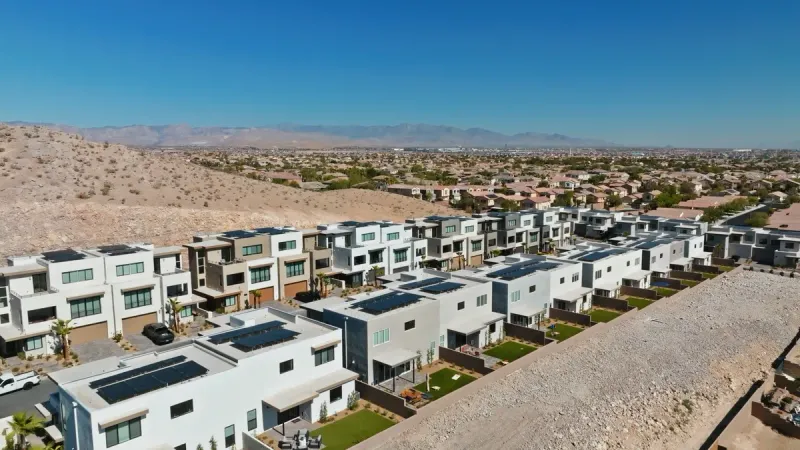
Urban infill townhomes are rapidly gaining value as Nevada’s housing market evolves toward efficiency and convenience. These vertical properties maximize space in desirable neighborhoods where land is scarce, offering lock-and-leave lifestyles increasingly valued by busy professionals and frequent travelers.
Walkability drives much of their appeal properties within strolling distance of restaurants, shops and entertainment command significant premiums. Energy efficiency provides another advantage, with newer construction incorporating better insulation, modern HVAC systems, and sustainable features that reduce operating costs.
Multi-generational buyers are particularly drawn to these properties, with young professionals and downsizing empty-nesters competing for well-designed units in prime locations. Market analysts predict values could increase 20-25% by 2025 as demand continues outpacing the limited supply of quality infill developments.
14. Eco-Friendly Ranch-Style Homes
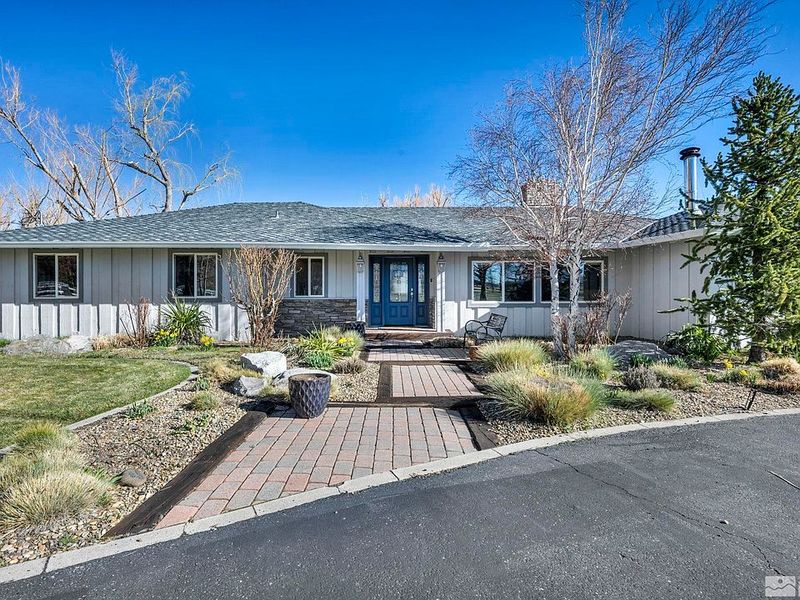
Updated ranch homes with sustainable features represent one of Nevada’s fastest-growing property segments. Single-level living appeals strongly to aging Baby Boomers seeking accessibility while attracting younger buyers who appreciate the potential for modern, open-concept renovations.
Water-wise landscaping provides a significant advantage in desert regions, with xeriscaped yards requiring minimal maintenance and reducing utility costs. Renovation potential drives much of the value growth – these homes typically offer straightforward floor plans that can be easily updated to contemporary standards.
Solar orientation becomes a key selling point, with properly positioned ranch homes able to maximize natural lighting while minimizing heat gain. Values for eco-updated ranch properties could increase 15-18% by 2025, especially for homes with certified energy-efficient upgrades and water conservation systems suited to Nevada’s climate challenges.
15. Solar-Ready New Builds
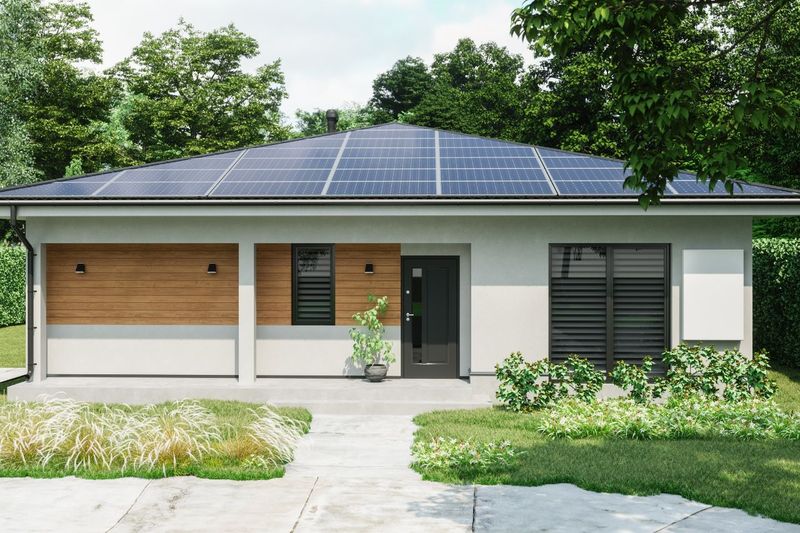
New construction homes designed specifically for solar efficiency are commanding impressive premiums in Nevada’s sun-drenched market. These properties feature roof designs optimized for panel placement, pre-wired electrical systems, and energy storage preparation that simplifies renewable adoption.
Orientation advantages set these homes apart – they’re carefully positioned to maximize sun exposure during peak collection hours while minimizing heat gain in living spaces. Utility savings present a compelling selling point, with properly designed solar-ready homes reducing energy costs by 50-70% compared to standard construction.
Nevada’s generous solar incentives further boost these properties’ appeal, with tax benefits and net metering programs enhancing return on investment. Values for thoughtfully designed solar-ready homes could increase 20-30% by 2025 as energy costs rise and climate consciousness continues growing among Nevada homebuyers.
16. Compact Smart-Home Designs
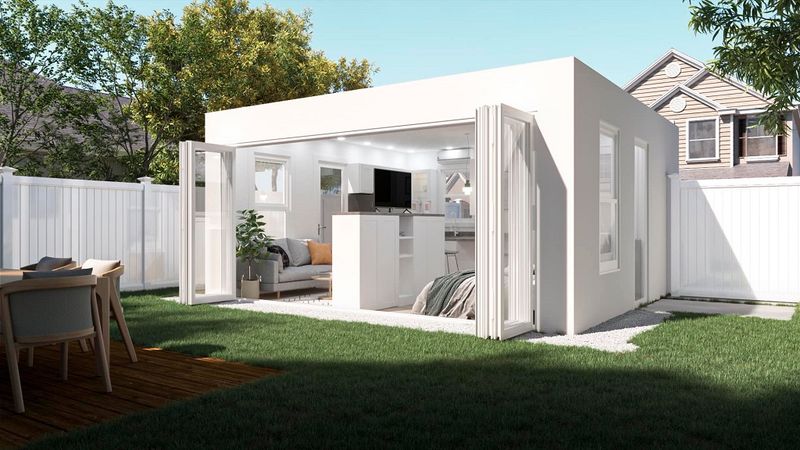
Smaller, technology-integrated homes under 1,800 square feet are experiencing remarkable value growth across Nevada. These efficient properties emphasize quality over quantity, with high-end finishes and smart systems creating comfortable, convenient living environments without excessive space.
Affordability drives much of their appeal – lower purchase prices and reduced maintenance costs attract first-time buyers and downsizers alike. Integrated technology adds significant value, with built-in automation systems controlling everything from climate to security becoming expected features rather than luxury upgrades.
Flexible spaces define these successful designs, with multi-purpose rooms that adapt to changing needs without wasted square footage. Market analysts predict these compact, tech-forward homes could see values increase 25-30% by 2025 as Nevada buyers increasingly prioritize efficiency, sustainability, and lower operating costs over sheer size.


